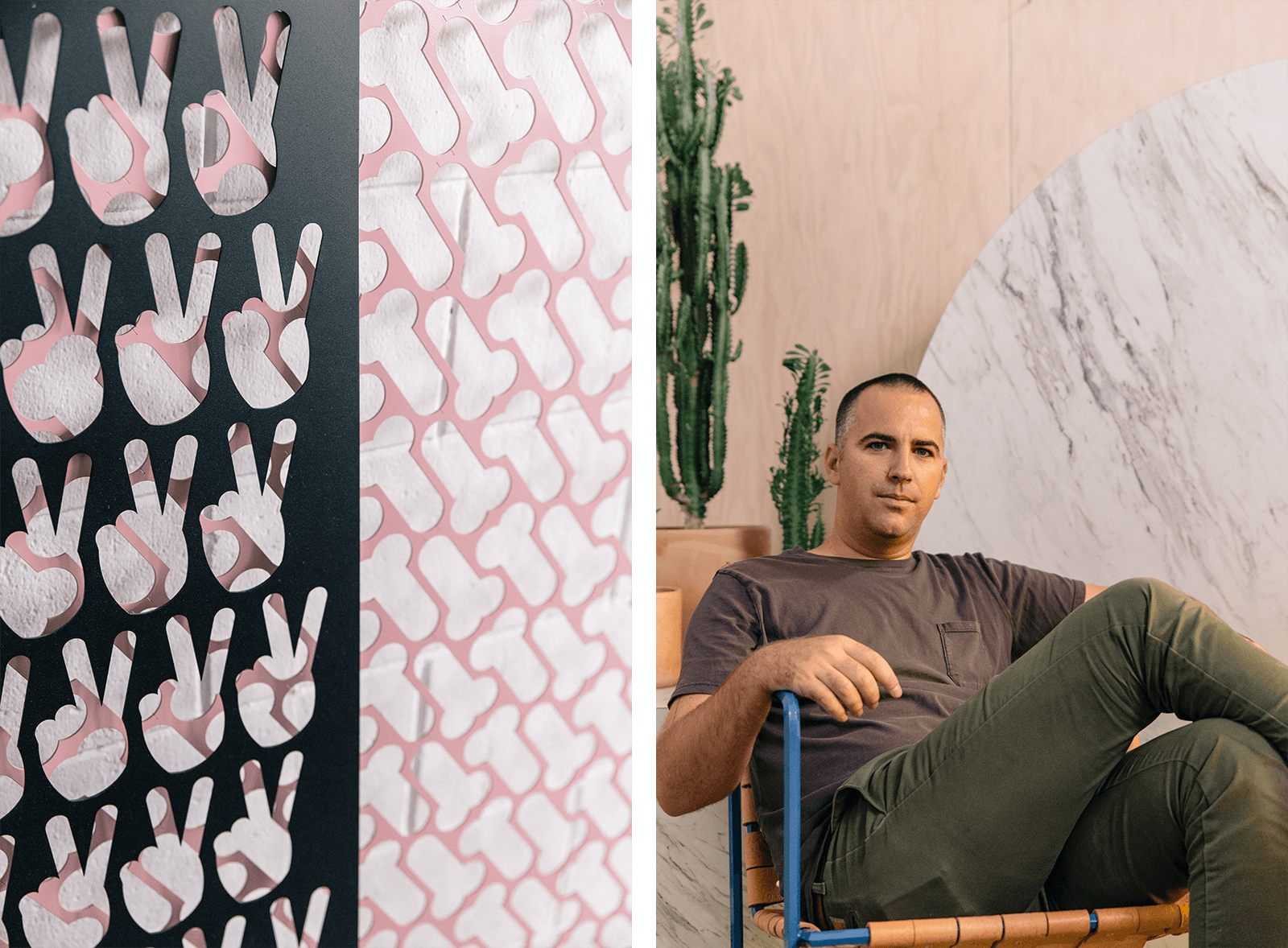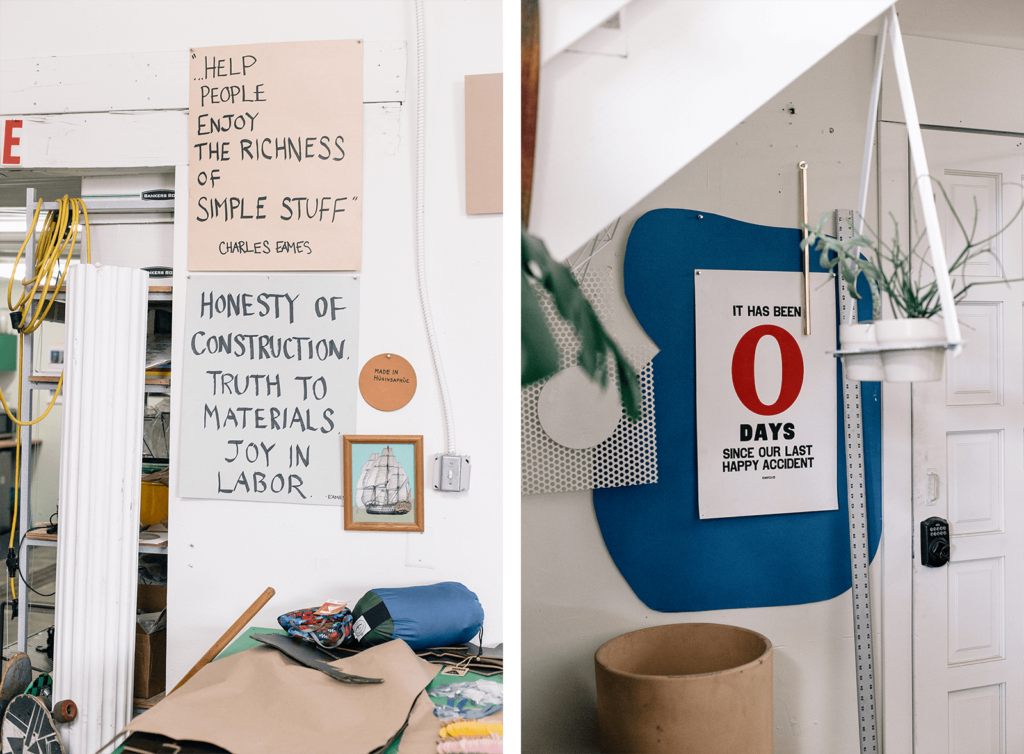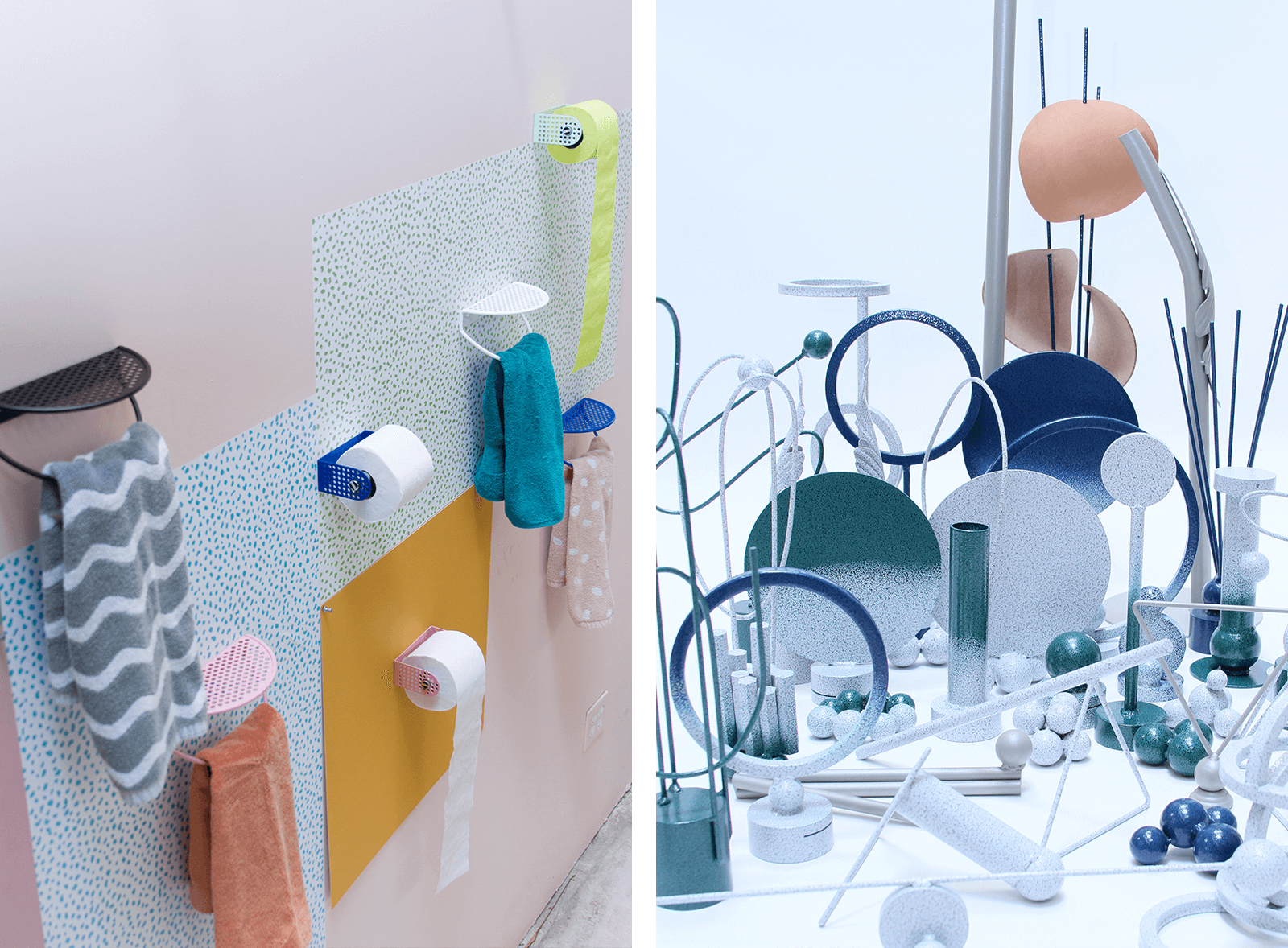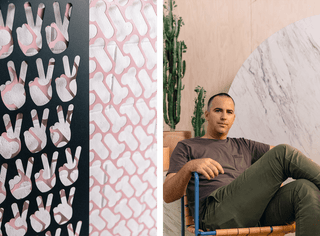
Eric Trine is still figuring things out. The 34-year-old designer has managed to get this far by following his instinct, so why change things now?

Trine, a Southern California native, has made furniture and home objects for nearly a decade. Along the way, he’s managed to cultivate a distinct aura of California coolness, both online and off. In fact, the journey has been documented (and beautifully art directed) for everyone to see on his eye-catching Instagram. His eponymous design studio has also snagged write-ups in The New York Times and Los Angeles Times, and has landed retail accounts big and small, like home decor chain West Elm and trendy e-commerce tastemaker Need Supply. For something that is so quintessentially West Coast, Trine’s work has certainly gone far beyond The Golden State.
Trine grew up a pretty average California kid: sports, surfing, skateboarding—all the usual happenings of a sun-soaked upbringing. He eventually realized his calling when he joined a set design program during high school. “I didn’t care about academics anymore, I had found my tribe,” he says. “It wasn’t about a sense of rebellion—this was just really important to me.” His grades slipped as he put all his energy towards his newfound extracurriculars, but Trine still enrolled in a local city college upon graduation. He’d meet a bunch of up-and-coming artists and musicians within the Los Angeles scene, many who attended the small suburban Biola University. He eventually transferred there to pursue a Fine Arts major, spending his senior year focusing on painting and sculpture. After graduation, he started working for his father’s business but continued to work as a freelancer building retail fixtures and installations.

It wasn’t until Trine had an empty home to furnish that he decided to try his hand at building his own furniture. Piece by piece, he and his wife slowly filled their space with his first attempts at original work. Trine would share the photos online and was an early adopter of the fledgling interior design blogosphere. Word spread to their friends (and then friends-of-friends) and he soon found himself busy with commissioned orders. “After a couple of years, I finally tipped the scales and realized I could do it full-time,” he says. “But I was just making stuff for people and I knew nothing about design because I didn’t formally study it until grad school.”
He quit his day job and focused solely on making furniture, and eventually decided to pursue his MFA in Applied Craft and Design from Oregon College of Art and Craft in Portland. After that, Trine showed his work during New York Design Week. It was a busy year. He settled back in Southern California and set up shop in a proper studio; no more working out of his garage. Trine speaks fondly of his time at grad school but stresses the importance of getting your hands dirty in a non-academic setting: “When working on your own, there is no one giving you critiques and feedback. You’ve got to really find your voice.”
“Why does [my work] need to be in the MoMA? I just want it to be in someone’s living room.”

Nowadays, Trine keeps pretty busy but he’s in no rush to reach that next tier of success or acclaim. “Me and Miles [his studio’s one employee] went surfing this morning and came into work at 11a.m.,” he says. “We’re trying to do this thing and do it really well but we’re not killing ourselves trying to get to the next level.” Don’t mistake Trine’s relaxed approach for complacency though. That’s just the frequency in which he operates. “None of my stuff is overly precious. Design should be good and accessible, and you shouldn’t need to think about it more that that. In grad school, there was a preciousness to everything, and everybody felt like their work had to change the course of design. I wanted to make a chair that people like and want to buy. Why does it need to be in the MoMA? I just want it to be in someone’s living room.”
As a small business owner, Trine knows the value of making a name for yourself in today’s age of digital marketing and brand building. His approach is similar to the objects he makes: colorful, well thought-out, and to the point. Trine’s Instagram has become a looking glass into his world. It’s blends promotion, dreamy studio shots, and behind the scenes musings into one powder-coated package. Even his website boasts that the best way to keep informed of day-to-day studio projects is through Instagram. “I don’t pay for advertising,” he says. “Everything is very organic and I keep it in-house. I know the studio will grow as we continue to make good stuff and keep getting it out there.”
“We’re trying to do this thing and do it really well, but we’re not killing ourselves trying to get to the next level.”

Like many creative entrepreneurs, his Instagram took a took a huge hit from the recent tweaks to the platform’s algorithm. Engagement and sales directly referred from Instagram have both dropped but that hasn’t stopped him from posting stylized photo after photo. In an era obsessed with personal branding, Trine blurs the line between person and brand with an earnest quality that the internet rarely sees. With him, what you see is what you get. There is no staged candids or false modest captions—everything Trine posts is a real reflection of his life and hard work. Sure, it’s well-lit and full of bold colors but that is just an accurate refection of what he creates.

